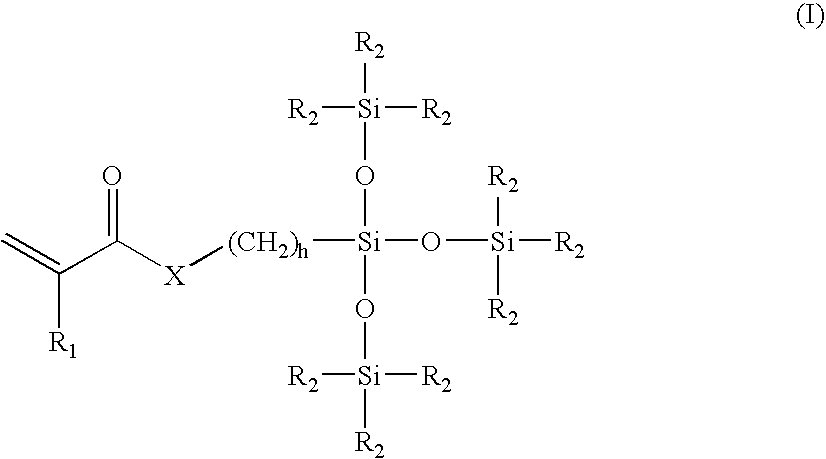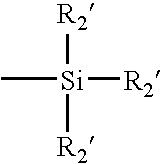Process for Extracting Biomedical Devices
a biomedical device and process technology, applied in the field of ophthalmic surgery, can solve the problems of affecting optical clarity or irritating the eye, the lens-forming monomer may not be fully polymerized, and the isopropanol is relatively flammable, so as to achieve less flammability and safer manufacturing process
- Summary
- Abstract
- Description
- Claims
- Application Information
AI Technical Summary
Benefits of technology
Problems solved by technology
Method used
Image
Examples
example 1a
NG
[0080] A monomer mixture was prepared from the components listed in Table 1. The amounts in Table 1 are parts by weight percent unless otherwise noted. The monomer mixture was placed between anterior and posterior contact lens molds, and thermally cured in a nitrogen-filled oven at 110° C. Following curing, the posterior mold sections were removed, and the contact lenses were released from the anterior mold sections.
TABLE 1ComponentParts by WeightID2S4H11TRIS35DMA11NVP40HemaVC0.5Hema5DEGMBE3IMVT150 ppmUV-Agent0.5Initiator0.5
example 1b
CTION
[0081] The contact lenses were weighed, and then submersed into 1.2 mL of the solvents listed in Table 2. After the noted period of extraction, the lenses were removed from the solvent and placed in 2 mL deionized water for 30 minutes. The lenses were removed from the water, dried overnight in a vacuum oven at 80° C., and then weighed again. The percentage of weight loss is recorded as percent extractables. For each entry in Table 2, batches of six lenses were tested collectively. The first entry in Table 1 served as a control since extraction in isopropyl alcohol (IPA) for sixteen hours should approach removal of all extractables.
TABLE 2SolventExtraction Time% ExtractablesIPA16 hours5.34IPA60 minutes5.05IPA / Water (50 / 50)60 minutes2.48Water60 minutes2.46DEGMBE60 minutes4.2DEGMME60 minutes4.80DPGMME60 minutes5.07DEGMBE / Water (50 / 50)60 minutes2.22
[0082] As seen in Table 2, water alone and the IPA / water mixture did not remove sufficient extractables in 60 minutes. Additionally, ...
PUM
| Property | Measurement | Unit |
|---|---|---|
| flash point | aaaaa | aaaaa |
| flash point | aaaaa | aaaaa |
| flash point | aaaaa | aaaaa |
Abstract
Description
Claims
Application Information
 Login to View More
Login to View More - R&D
- Intellectual Property
- Life Sciences
- Materials
- Tech Scout
- Unparalleled Data Quality
- Higher Quality Content
- 60% Fewer Hallucinations
Browse by: Latest US Patents, China's latest patents, Technical Efficacy Thesaurus, Application Domain, Technology Topic, Popular Technical Reports.
© 2025 PatSnap. All rights reserved.Legal|Privacy policy|Modern Slavery Act Transparency Statement|Sitemap|About US| Contact US: help@patsnap.com



